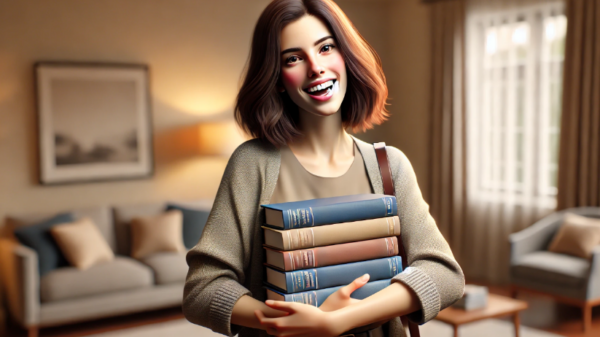Once upon a time, printing a book meant using up forests and releasing a significant amount of pollutants into the air—definitely not something any tree-hugging author would want on their conscience. But in today’s world, green printing is on the rise, driven by both technological advances and a growing demand for sustainability. In fact, the global eco-friendly printing market is projected to grow by over 9% annually, reaching $78.8 billion by 2026, showing a great rise of eco-friendly printing.
For authors, going green isn’t just about saving the planet; it’s also about making a statement. It shows readers that you’re a forward-thinking writer who cares about the world as much as the words you craft. But how do you go about making your publishing process more eco-friendly? Let’s break down some essential tips for authors looking to reduce their environmental footprint, without sacrificing the quality of their printed masterpiece.
What is Eco-Friendly Printing?
Eco-friendly printing refers to the practice of producing printed materials in a way that minimizes harm to the environment. This approach encompasses a variety of sustainable printing practices, such as using recycled paper, eco-friendly inks, and energy-efficient equipment. The goal is to reduce the environmental impact of the printing industry, which has historically been a significant contributor to greenhouse gas emissions and waste generation.
Your Publishing Journey Awaits – Start NowBy adopting eco-friendly printing practices, both businesses and individuals can significantly reduce their carbon footprint. For instance, using recycled paper helps conserve natural resources and reduces the demand for virgin wood pulp. Similarly, opting for energy-efficient equipment in the printing process can lower energy consumption and decrease greenhouse gas emissions. In essence, eco-friendly printing is about making conscious choices that contribute to a more sustainable future, ensuring that our printing practices are as kind to the planet as possible.
Sustainable Printing Practices: The New Norm
Gone are the days when printing meant depleting natural resources. Welcome to the age of sustainable printing practices. Think of it as the organic farming of the publishing world—less harmful, more thoughtful, and surprisingly cost-effective in the long run.
One way the printing industry is cutting down its environmental impact is by using energy-efficient equipment and digital printing technologies. Digital printing presses, for example, eliminate the need for the massive printing plates required by traditional methods, significantly reducing waste. Traditional printing methods often involve high upfront costs and significant environmental waste from overproduction. Plus, digital presses allow for on-demand printing, meaning fewer unsold books gathering dust on shelves (and less paper wasted).
If you’re serious about going green, consider working with a printer that prioritizes using eco-friendly inks, such as soy-based or vegetable-based options, which reduce the release of volatile organic compounds (VOCs). These inks are a sustainable alternative to traditional petroleum-based inks, which are notorious for their high environmental impact. Modern printing processes, such as digital and inkjet printing, contribute to lower environmental impacts and enhanced efficiency.
Choosing Eco-Friendly Printing Materials
Selecting the right materials is a crucial step in eco-friendly printing. One of the most impactful choices you can make is to use recycled paper. This not only reduces the demand for virgin wood pulp but also helps conserve natural resources and minimize waste. Recycled paper has come a long way in terms of quality, offering the same durability and crispness as non-recycled options.
In addition to paper, the type of ink used in printing can also have a significant environmental impact. Traditional petroleum-based inks are notorious for their harmful effects on the environment. Instead, opt for eco-friendly inks made from soy or vegetable-based materials. These inks are not only less harmful but also produce vibrant colors and high-quality prints.
When selecting printing materials, look for certifications from organizations like the Forest Stewardship Council (FSC) or the Programme for the Endorsement of Forest Certification (PEFC). These certifications ensure that the materials are sourced from responsibly managed forests, further reducing the environmental impact of your printing project. By making these mindful choices, you can significantly contribute to more sustainable printing practices.
Rise of Eco-Friendly Printing – Recycled Paper: Saving Trees, One Page at a Time
Let’s talk about the elephant in the room—paper. Every book begins with a tree, right? Not necessarily. In the world of eco-friendly printing, recycled paper is king. By using post-consumer recycled paper, authors can help reduce deforestation while also giving new life to materials that would otherwise end up in landfills.
It’s not just about the paper itself, though. Look for printers who use paper certified by the Forest Stewardship Council (FSC), ensuring that even non-recycled paper is sourced from responsibly managed forests. While recycled paper may have had a bad rap in the past for being lower quality, technological improvements have made recycled paper just as durable and crisp as its non-recycled counterpart. So, you can have your tree and your printed pages, too.
Reducing the Carbon Footprint: Printing with a Conscience
Every printing decision you make affects your book’s carbon footprint. Implementing sustainable practices, such as using renewable energy sources and minimizing waste, can greatly reduce your book’s environmental impact. From the ink to the energy used in the process, there are multiple ways to minimize your environmental impact. To reduce your carbon footprint, consider choosing a printer that uses renewable energy sources. For instance, some eco-friendly printers power their presses with solar or wind energy, reducing the reliance on fossil fuels and cutting down on greenhouse gas emissions.
Your Publishing Journey Awaits – Start NowAdditionally, adopting print-on-demand models can significantly reduce waste and energy consumption. Rather than producing large quantities of books that might not sell, you can print only what you need. This approach is especially effective for self-published authors who may not want to (or be able to) manage an inventory of unsold books. Less inventory means less waste and a smaller environmental footprint.
Partnering with Eco-Friendly Printing Companies
Choosing to work with eco-friendly printing companies is a powerful way to reduce the environmental impact of your printing projects. These companies have already implemented sustainable printing practices, such as using energy-efficient equipment, reducing waste, and promoting recycling. By partnering with them, you can leverage their expertise and infrastructure to make your printing process more sustainable.
Eco-friendly printing companies often offer a range of sustainable materials, including recycled paper and eco-friendly inks. They are also more likely to use renewable energy sources, such as solar or wind power, to run their operations. This not only reduces their carbon footprint but also sets a positive example for the industry.
Partnering with an eco-friendly printing company can also enhance your reputation. In today’s market, consumers are increasingly looking for brands that demonstrate a commitment to sustainability. By aligning yourself with eco-friendly practices, you can attract environmentally conscious readers and build a loyal following. In essence, working with eco-friendly printing companies allows you to reduce your environmental footprint while also strengthening your brand’s commitment to sustainability.
Practical Tips for Authors: How to Green Your Book Project
Alright, you’re ready to dive into eco-friendly printing. But where do you start? Here are some practical tips to make your book project as green as it is groundbreaking:
1. Choose an Eco-Friendly Printer: Not all printers are created equal. Find one that specializes in sustainable printing practices, like using energy-efficient machines, eco-friendly inks, and FSC-certified paper.
2. Go Digital Where Possible: If you don’t absolutely need physical copies of your book, consider focusing on eBooks or audiobooks. Digital publishing has virtually zero environmental impact and eliminates the need for printing altogether.
3. Print on Demand: Instead of printing hundreds of copies up front, opt for a print-on-demand service. This ensures that you only produce books as they’re ordered, cutting down on waste and overproduction.
4. Mind Your Packaging: Think about the lifecycle of your book. Even after it’s printed, how will it be shipped? Use minimal, recyclable packaging materials to further reduce your book’s environmental footprint.
At Spines, we’re helping authors not only publish their work but do so in an eco-friendly manner. By combining AI-driven tools with sustainable printing options, we make it easier than ever to get your book out into the world—without leaving a hefty carbon footprint behind. Plus, our global distribution means your work reaches readers far and wide, without the environmental cost of traditional shipping methods.
Benefits Beyond the Environment: Why Going Green is Good for You
Aside from saving the planet, embracing eco-friendly printing practices can also benefit you, the author. Readers today are more environmentally conscious than ever, and they’re willing to support authors who share their values. According to a 2020 study, 72% of consumers are willing to pay more for products that come from eco-friendly brands.
By adopting green practices, you’re not just doing good—you’re also enhancing your brand. Eco-friendly printing can become part of your book’s story, adding depth to your personal narrative as an author. It’s a win-win situation: You help save the environment, and in turn, you gain loyal readers who appreciate your commitment to sustainability.
And let’s not forget about the cost savings. Although it might seem counterintuitive, many eco-friendly printing practices, such as using digital presses or recycled materials, can actually reduce production costs in the long run. You save money, and the planet thanks you for it. Win-win again.
Your Publishing Journey Awaits – Start Now







